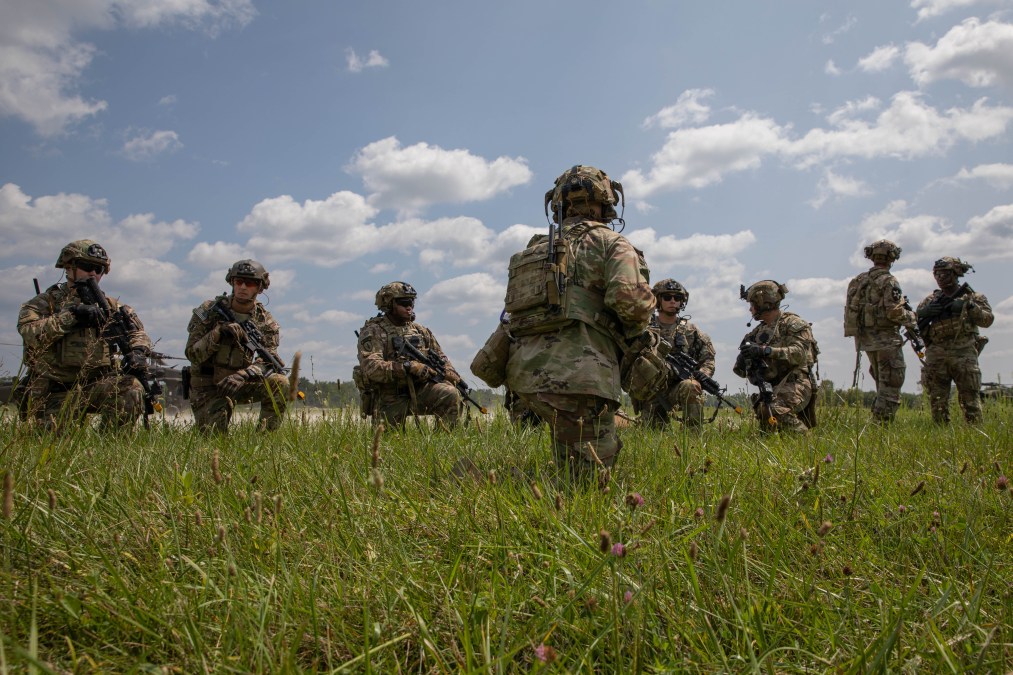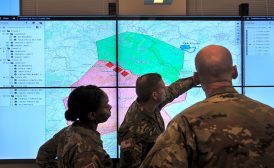Army releases first doctrinal publication focused on information

The Army unveiled its first doctrinal publication focused solely on the information dimension of military action.
The highly anticipated document, released publicly on Monday, was many years in the works. It aims to provide a framework for creating and exploiting information advantages during operations as well as at home station, according to officials.
The U.S. military as a whole has begun a shift, recognizing the importance information plays not only in conflict but in everyday life. Adversaries have sought to exploit the information realm on a daily basis — within the so-called gray zone, below the threshold of armed conflict — as a means of undermining U.S. and allied interests without having to confront them in direct military conflict.
Army Doctrinal Publication 3-13, Information “represents an evolution in how Army forces think about the military uses of data and information, emphasizing that everything Army forces do, to include the information and images it creates, generates effects that contribute to or hinder achieving objectives,” Lt. Gen. Milford Beagle, commander of the Combined Arms Center, wrote in the foreword. “As such, creating and exploiting information advantages is the business of all commanders, leaders, and Soldiers.”
Nestled within the Army’s new operating concept of multi-domain operations — which envisions continuous synchronization of capabilities across all five domains of battle including land, air, sea, space and cyberspace — ADP 3-13 describes a combined arms approach to creating and exploiting information objectives.
“Despite friendly advances in information technology and networks, threats (adversaries and enemies) can degrade joint force information advantages held in the past. Within degraded environments, Army leaders at all echelons must have the ability to develop understanding, make decisions, communicate, and act decisively. To achieve this, Army forces fight for, defend, and fight with information as part of a continuous struggle to gain and exploit advantages above and below the threshold of armed conflict,” the document states.
ADP 3-13 sets forth five information-related activities:
- “Enable,” with the goal of enhancing military activity and command and control
- “Protect,” with the aim of denying enemy efforts at exploiting friendly forces and working to secure and preserve U.S. and partner data, information and networks
- “Inform,” with the intent of providing perceptions of military operations and activities among various audiences to include the Army, domestic audiences and international audiences for the purpose of maintaining trust and confidence
- “Influence,” with the objective of affecting the thinking and activities of adversaries
- “Attack,” as a way of hindering adversaries’ ability to use data, information, communications or other systems through offensive action within the electromagnetic spectrum, space and cyberspace
The Army has sought to avoid the term “information warfare,” preferring to use the phrase “information advantage.” The service had been charting down a path of information warfare since the 2018-2019 time period, but bureaucratic bottlenecks and competing desires led the Army to adopt “information advantage” as part of its doctrinal lexicon.
Since those discussions, the Army has continued to evolve and further separate itself from the information warfare nomenclature, despite using it to describe adversary activity in its field manual for operations as well as the new doctrine.
Additionally, the Army has distanced itself from other Defense Department components, being the only service not to adopt information as a joint warfighting function. Army officials view information as one dimension of a singular operating environment.
Last year, the Joint Staff published a revision to its information doctrine, Joint Publication 3-04, Information in Joint Operations. Following suit, the Marine Corps revised its approach and doctrine on information to be more in line with joint doctrine and lexicon. The Air Force also published an information warfare strategy and implementation plan last year, opting to place five functional areas under the IW umbrella.
Although the Army has a unique approach, its new document includes a chapter focused on integration with joint and multinational partners.






